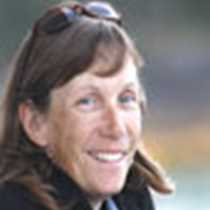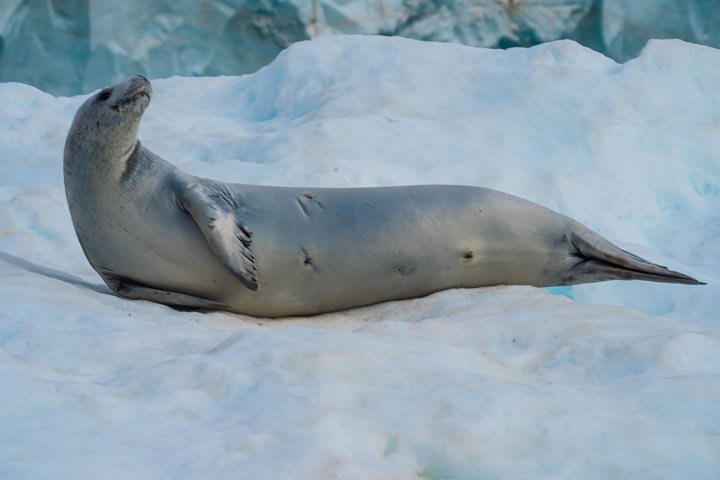This morning we woke up officially in Antarctica, having crossed both the political and biological boundaries sometime during the night. Our morning navigation to the South Shetland Islands held many fine sightings. Fin whales, the second largest whale on the planet, were seen feeding in these rich waters as were many Antarctic fur seals. Then once in the South Shetlands and entering English Strait, we were delighted by the sight of more than 1000 penguins all feeding together. Clearly this is a rich area!
After lunch we split into two groups to explore Half Moon Island and its chinstrap penguin colony. Half of us took the long road to the colony. We got dropped off at the far end of the island to first get in a good hike. Along the way we saw many Antarctic fur seals and a few Weddell seals, as well as a scenic display of blue icebergs drifting along the back of the island.
The rest of us went straight to the chinstrap colony to enjoy the penguins. Chinstraps are one of the three species of brushtail penguins that we will see on the peninsula this week. They are wrapping up a summer of breeding and have very large chicks now.
There was a lot of activity going on in the colony. Adult chinstraps were constantly coming and going from shore – out to sea to feed on krill and back to land to bring food to the chicks. It was easy to tell which part of the commute they were on since bathing was the first thing they did upon entering the water, and their white feathers were impressively clean after a swim.
The penguin chicks did not have the luxury of going in for a bath. They still have downy feathers which are not waterproof, and they have to wait until they molt to their adult feathers before they can take to the water. For many of them, the new feathers will be a welcome trade since the mud (and perhaps some guano mixed in…) has turned their coats from gray and white to a reddish brown. Some of them are getting close to fledging and all of them will be off on their own in less than a month and will head to sea for the first time.
Some adults – who either did not raise young this year or have fledged chicks- already are molting as well. It is a yearly happening, and ensures that their feathers will keep them warm and waterproof for the coming winter at sea. They stand onshore looking disheveled as they wait for new feathers to replace the old and then they too will be back at sea. Besides the penguins we saw other birds as well – skuas, kelp gulls, snowy sheathbills and Wilson’s storm petrels. Summer this far south is short but productive and they are all here for the same reason.
This was a great introduction to this magical land. We are excited to see what tomorrow brings.







